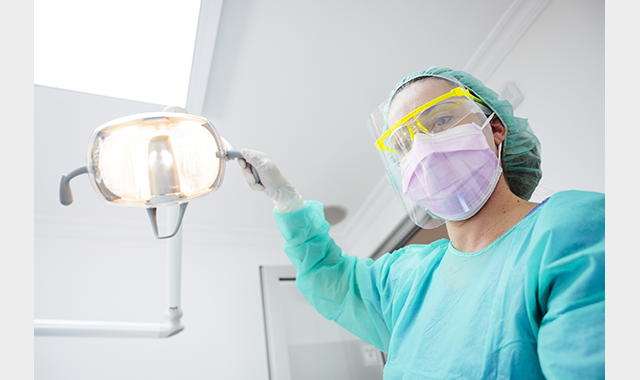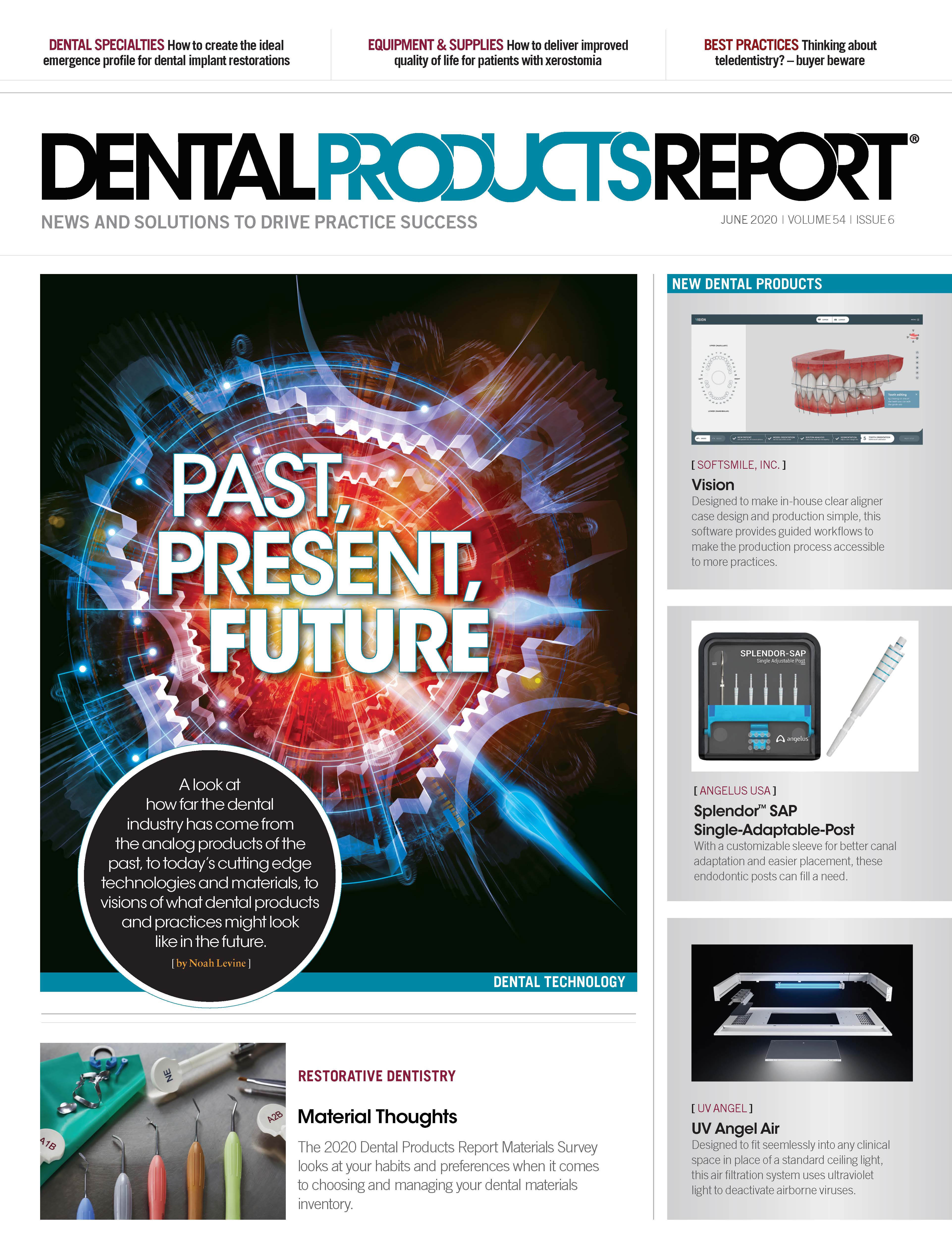Practices must ramp up infection control in a post-pandemic world
Expect more mandates and invest in measures to protect patients and staff from diseases like COVID-19.

Like other health care sectors, the dental industry was caught off guard by the COVID-19 pandemic. Practices were forced to shut their doors and could see patients only for emergency care or using teledentistry. Many practices are just beginning to reopen after being closed for weeks or even months.
“Before the coronavirus hit, hard, we were looking at our best year on record,” Steve Thorne, CEO of Pacific Dental Services in Irvine, California, said during a recent panel discussion hosted by the American Dental Association’s Health Policy Institute. “I think our data showed that the industry would do somewhere near $150 billion in 2020. Our estimates for this year have dropped to $52 billion. To say it’s been devastating to the industry is a massive understatement.”
There is no way the industry can recover quickly from such a massive upheaval; aside from that, few predictions can be made. What will the “new normal” look like?
“There’s so much that we don’t know, and I am not sure if anyone can predict what the new normal will be,” says Karen Gregory, RN, director of compliance and education for Total Medical Compliance, a company in Indian Trail, N.C., that offers Occupational Safety and Health Administration (OSHA) and Health Insurance Portability and Accountability Act (HIPAA) training and consulting. “I do believe that there needs to be more documented science on how this is spread in an airborne manner. Our dentists, our hygienists, our assistants seem to be at increased risk because of the way dentistry is performed. What is the exact level of protection they are going to need?”
Preparedness Plans
At a high level, practices will need to have business and operation plans in place to better deal with how the practice will function should this type of crisis happen again. “We need better planning and development of business continuity plans and safety plans,” says Mary Borg-Bartlett, president of SafeLink Consulting in Cumming, Georgia. “This pandemic has taken everyone off guard, from the availability of PPE (personal protective equipment) to financial readiness.”
It’s important that business owners have a contingency plan in place. A business continuity plan should outline every type of situation that could interrupt business operations and include strategies to overcome those obstacles at a moment’s notice, Borg-Bartlett says.
Pandemics such as COVID-19 also underscore the need for proper safety planning for the office. OSHA’s Guidance on Preparing Workplaces for COVID-19 can help practices develop an infectious disease preparedness and response plan, Borg-Bartlett says. OSHA also offers a COVID-19 guide specifically for dental practices. These guidelines can be accessed at osha.gov/publications.
“The importance of a health and safety plan has also come to the forefront,” she says. “Those plans must also be updated to now include airborne precautions. Dental practices are prepared for working with bloodborne pathogens and do not have the comprehensive workplace-specific plan that addresses standard, contact, and airborne precautions.”
Finding out if a patient or staff member is ill is key in preventing the spread of infection. The Centers for Disease Control and Prevention (CDC) urges sick employees and patients to stay home to mitigate the spread of the virus.
“This pandemic has also made business owners more aware of the need for staff and patient screening,” Borg-Bartlett says. “Employers must also take the initiative to send staff members home when they are sick. COVID-19 can infect any of us, so I feel that it has opened our eyes to how vulnerable we can be to a virus that is nondiscriminatory.”
Updated Mandates
Expect agencies such as the CDC and OSHA to alter their recommendations and regulations to better suit the current risk landscape. It’s important to regularly check for the most recent updates from trusted sources to ensure that all safety protocols are up-to-date.
Practices can expect stricter respiratory protections, according to Leslie Canham, CDA, RDA, a speaker and consultant on OSHA and dental infection control. Anticipate widespread use of N95 masks, she says, but realize that just passing these out won’t cut it. “If someone is going to wear an N95 respirator, there are OSHA regulations that surround what employers have to do,” Canham says. “They have to provide fit testing for each person wearing a respirator.”
Continue reading on the second page...
A fit test determines whether the mask properly creates a seal around the wearer’s nose and mouth, she says. Respirators are not one-size-fits-all, and an individual may need a different model.
Historically, OSHA mandated annual fit testing, but the administration has temporarily relaxed that requirement. That letup may have led to some misunderstandings. “Currently, OSHA has lifted the annual fit test requirement, but many dentists are confused, thinking that the OSHA has waived the initial fit testing. But that’s not the case,” Canham says. “It’s a little scary to think that you could just put someone in a piece of protective gear and assume that that is going to be protecting them. Fit testing is the only way to confidently confirm that the employee is protected.”
Employees will also have to fill out a medical evaluation questionnaire that must be reviewed by a licensed physician, Canham adds. Plus, staff must learn how to correctly use an N95 mask. “They have to be trained in how to don it properly and how to remove it without contaminating themselves. They also need to learn how to perform a seal check to make sure every time they don it, they are checking to make sure it’s doing its job. There’s no sense in wearing an N95 respirator if it has leaks or if one is able to still inhale potentially infectious aerosols,” she says.
The COVID-19 closures have been devastating to practices’ bottom lines, but reopening will require special attention to safety. “We have to figure out a way to do it, but we also have to figure out a way for dental care to be delivered safely and to be able to assure workers that you’re going to be safe in the work environment,” Gregory says.
Designing for Distancing
Segregating patients and staff from unnecessary contact with each other can help mitigate transmission of infections. OSHA and the CDC recommend placing more barriers between operatories, which tend to be open to provide quick access to patients, Borg-Bartlett says. It’s also safe to expect changes to the reception and waiting room areas, she adds.
“Perhaps the future design of a dental office will be affected by this pandemic,” Borg-Bartlett says. “Front waiting areas may need to be more spacious to allow for physical distancing in that area. Also, the open concepts with the front office staff may need to be better designed to protect the front office staff from close patient contact.”
Environmental changes in the practice can also go a long way in reducing the spread of COVID-19. OSHA notes the need for better local exhaust ventilation systems that capture and remove mists or aerosols generated during dental care, according to Borg-Bartlett. “Personal aerosol-removing devices are available that will help capture the aerosol during procedures, and many offices we work with are incorporating these devices into their everyday patient treatment,” she says. “Because this virus is viable in the air for a period of time, OSHA has recommended, when possible, to use directional airflow, such as from fans, to move the air through staff work areas, before patient treatment areas, and not the reverse. This may take hiring a qualified professional to assess the need to ensure that ventilation removes, rather than creates, workplace hazards.”
Expanding PPE
Gone are the days when PPE consisted just of gloves and masks. Use of PPE, including N95 masks, gowns, and face shields, will rise sharply among staff members.
“I think face shields will be the norm,” Canham predicts. “We will be required to use N95 respirators for aerosol-generating procedures and, likely, level 3 masks for other procedures. When it comes to the clinical jacket, I am quite fond of disposable gowns that are easy to remove and discard between patients. It would be something that solves the laundry problem, and people can wear scrubs underneath them.”
N95 respirators are not like traditional surgical masks. It’s hard to breathe in these masks, which, over an eight-hour day, can have health implications, according to Gregory. “Someone might feel a little more tired at the end of the workday,” she says. “If you have an underlying health issue, will you even to be able to tolerate an N95 respirator all day long? There are a lot of unknowns, and I don’t know think there are going to be quick answers.
“I do think that clinicians will adjust to this process,” she continues. “There will be workers (who) cannot wear a tight-fitting N95 respirator. But there are options such as a powered air-purifying respirator. (Although) this option may provide protection, workers may sense their visual field is impacted.”
As individual states balance reopening with the health of their citizens, practices should prepare for a second wave of COVID-19 later this year. “Because we don’t have a vaccine and there are reports about the uncertainty of long-term immunity once you’ve had the virus, it really raises a lot of questions as to how are we going to move forward,” Gregory says.
Whatever the future brings, it’s clear that dental care will be dramatically different. But it’s important to balance the need to compensate for missed revenue with the need to protect patients and staff from COVID-19.

Maximizing Value: The Hidden Benefits of Preventing Hospital-Acquired Pneumonia Through Oral Hygiene
September 10th 2024Originally posted on Infection Control Today. Hospital-acquired pneumonia (HAP) is a significant infection prevention concern, leading to high patient mortality, increased health care costs, and ICU usage. Oral hygiene is an effective preventive measure.